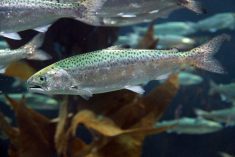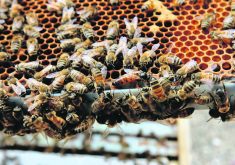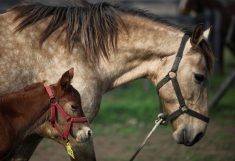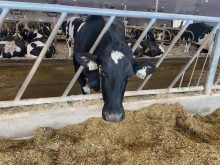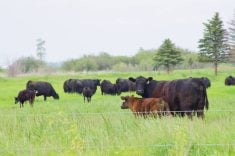If you think you can’t raise a healthy pig and turn a profit without the aid of antibiotics, think again.
While there is no silver bullet lying in wait to replace antibiotic growth promotants, a thoughtful mix of improved husbandry and antibiotic alternatives can prove as effective, University of Manitoba animal science professor, Martin Nyachoti told a department seminar last week.
Those with doubts can look to Scandinavian countries for guidance, he said.

“Really, the first step was taken in 1986 when Sweden became the first country to outlaw the use of antibiotics in livestock diets,” he said. “After that a few other Scandinavian countries followed suit.”
In 2006 the European Union banned the use of antibiotics as feed additives, and now the United States and Canada are also moving in that direction, albeit through voluntary changes to product labelling.
“To put things in context, there have been questions for a very long time — right since the 1960s — as to whether or not we should be using antibiotics in animal or livestock feed,” said Nyachoti. “This has been going on for a long, long time.”
That long history gives Manitoba’s producers a lot of good information to base production decisions on.
Read Also
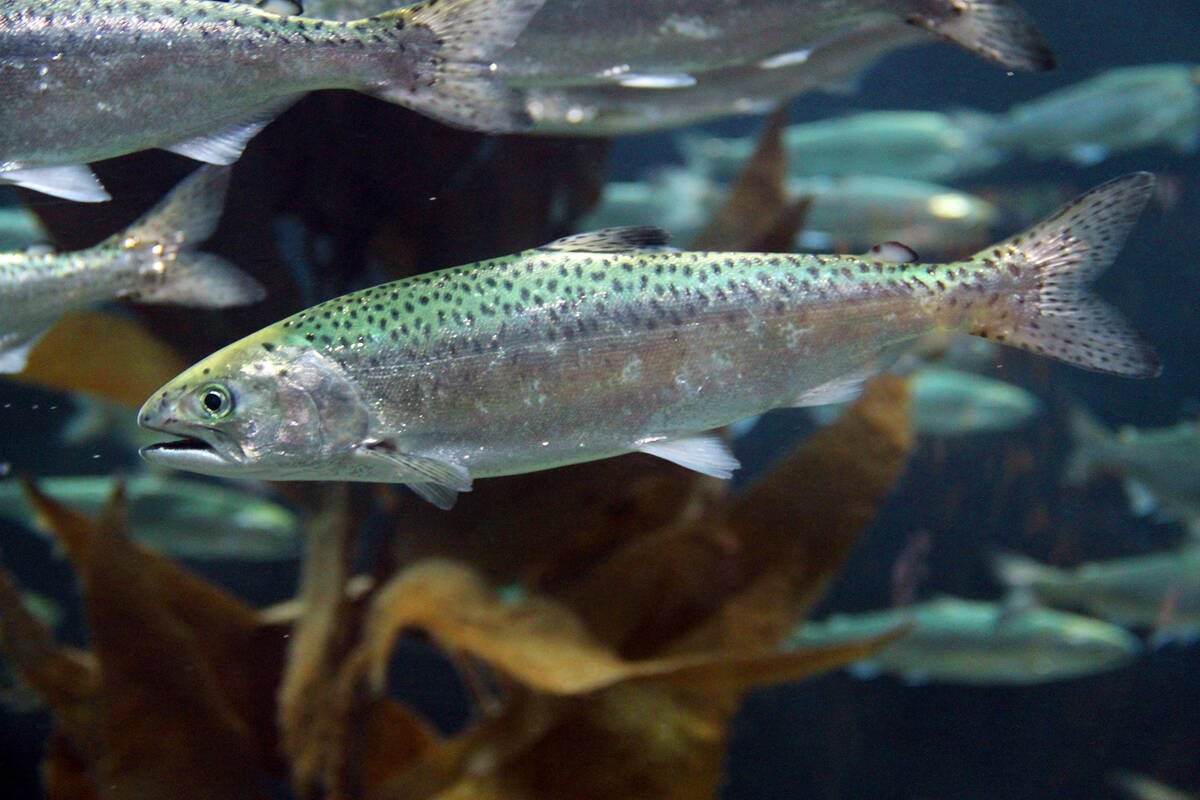
Canadian aquaculture wants farming treatment
Canada’s fish farms want to switch federal portfolios to be under Agriculture and Agri-Food Canada’s eye rather than Fisheries and Oceans Canada’s thumb and be able to grow production.
For example, when Scandinavian countries moved away from antibiotics by incorporating zinc oxide into piglet feed, the result was fewer enteric diseases, including post-weaning diarrhea. But Nyachoti notes Canadian producers won’t be able to replicate that transition because of Canadian restriction on the use of zinc — it can still be used in pig feed in Canada, but not at levels high enough to be effective on its own.
Alternatives
However, Nyachoti said there are other elements that can also be incorporated, including probiotics and prebiotics, the effects of which he is continuing to study.
“There has been a lot of interest in using the probiotics and prebiotics together to create a potential benefit, rather that using either one of them independently,” he said, adding that they can also be combined with feed enzymes, which can then assist in creating the short-chain carbohydrates pigs need to grow.
Egg yolk antibodies, cornstarch, lysozyme and organic acids have also proven beneficial, as have more controversial feed additives, such as blood plasma.
“Spray-dried plasma was in the news quite a bit last year, but it is actually one ingredient that we know works, and has been shown to work in baby pigs, it improves performance, it improves feed intake, and it does help prevent diarrhea problems in the piglets,” he said, but added, the additive was also implicated in the first cases of porcine epidemic diarrhea (PED).
“But that is something to talk about on another day,” said Nyachoti.
Many of these alternative feed additives are already in use in Manitoba, such as starch.
“Since we published that first paper on potato starch, there has been a lot of people who use that in the swine industry,” he said. “The industry realizes that they can actually get a benefit by including this product in baby pig diets.”
Other methods of improving piglet health and lessening the occurrence of gastrointestinal disease include low-protein diets and fermented feed.
“Fermented products do have high levels of organic acids and they can have a benefit to gut health,” Nyachoti said.
Husbandry
But to achieve good piglet health, and raise healthy pigs, husbandry methods also have to be re-examined.
“I think if we took the approach that you start clean and you stay clean, you can already go a long way in helping these pigs stay healthy, then they do not have to need this intervention,” he said.
One production method that made Nyachoti’s list of possible changes was outdoor pork production, although he acknowledges that isn’t likely to become a solution for Manitoba producers.
“For us, one of our biggest problems obviously is the weather, so outdoor production is probably not the way to go, but I think if we took the approach that you start clean and you stay clean, you can already go a long way in helping these pigs stay healthy, then they do not have to need this intervention,” he said.
But while he advised greater attention to husbandry methods, he didn’t go so far as to say less intensive methods were needed to prevent disease.
“Right now the way it is, there is the code of practice that says each animal needs to get so much space, and that, I think, is based on good information,” he said. “But having said that though, it’s also good to know that restriction in space does lead to stress and that can also compromise the health of an animal, but I think that what the industry is using, the code of practice, is determined as being sufficient.”
In the end, producers will likely need to use a combination of alternative feed additives, in addition to re-evaluating husbandry practices, to completely move away from the use of antibiotics as growth promotants.
“Yes the cost of production might go up a little bit,” he said. “But you can still competitively produce livestock.”



